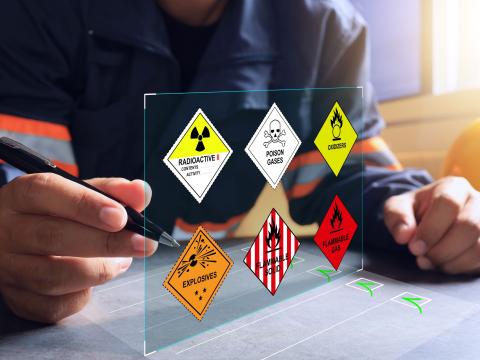Navy Embraces "Sprint" Contracting Method
Looking to create a more agile contracting process, the Department of the Navy's Program Executive Office for Enterprise Information Systems (PEO EIS) is trying out a new approach for next year's recompete of its major information technology contracts.
The so-called “sprint” process strives to bring in contract services that more directly align with the Navy’s and Marine Corps’ mission-related IT network and hardware requirements. Modeled after the computer industry’s agile software development process, the sprint contracting method rolls out contract documents more frequently and harnesses industry feedback on the front end, while incorporating the needs of end users.
"It allows us to continue to develop the contract documents in way that really reflects more on how we buy these products usually sold in the [commercial] industry,” Deputy PEO EIS Capt. Donald Harder, USN, explained at a recent media event.
The new method allows for a level of information exchange that typically isn’t built into traditional contract development. So far, the sprint process has shaved four to six weeks off of the contract-writing phase while allowing the PEO EIS to refine contract requirements. “We have already enriched the contracting language based on our weekly conference calls and one-on-one meetings with the industry,” Harder said. “It has allowed us to shift our way of thinking in a number of cases in regards to the types of services we are actually trying to receive.”
The PEO EIS has been able to push contract documents out in a “rapid” fashion—instead of waiting to release all documents at once. The office also has asked for and received industry feedback quickly. “We’ve learned,” Harder said. “We first asked for industry feedback within one week. Now we are giving them two-to-three weeks.”
Getting commercial input this early on in the contracting process, in conjunction with end-user feedback, only increases the expected outcome for services under the new contract known as Next Generation Enterprise Network Re-Compete (NGEN-R), Harder posits.
The NGEN-R vehicle will provide services for more than 700,000 Navy and Marine Corps users in two areas: end-user hardware (EUHW)—cellphones, laptops and device management; and hardware for purchase—and service management, integration and transport (SMIT). The two contracts will be awarded separately, both about six months after initially planned. The EUHW contract will be awarded in November 2018. The SMIT contract—which involves core network services, information security, systems engineering, data center facilities, service desk, and command and control decision support services, among other areas—will be awarded in December 2018.
The current $3.45 billion contract, the Next Generation Enterprise Network (NGEN)—which has a period of performance through June 26, 2018—does have to be extended by six months, so the PEO EIS can incorporate the time needed for exchange of information with the industry in shaping the contract needs of NGEN-R.
"This gives us an opportunity for a lot of extensive industry interaction to ensure that the way we are going about developing the acquisition documents gets us to what we are really driving for: the expected outcome for our end users,” Harder said.
NGEN provides IT and support services to the Navy Marine Corps Intranet (NMCI) and the Marine Corps Enterprise Network (MCEN) for users in the continental United States (CONUS) and outside of the continental United States (OCONUS). NGEN-R will expand on NGEN’s single-source service model to provide multi-source services (on- and off-premises) more closely aligned with unique customer profiles in the Navy and Marine Corps along with real-time command and control requirements.





Comments